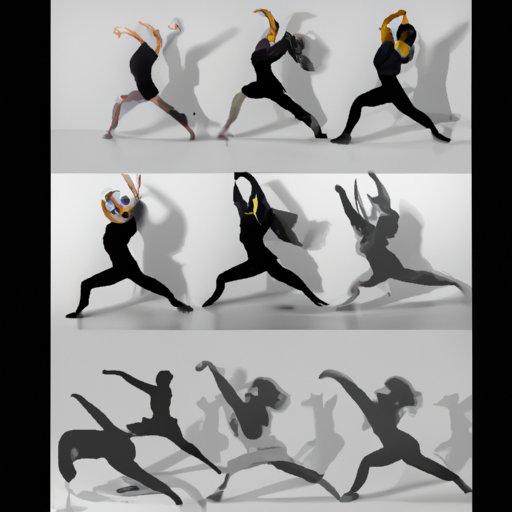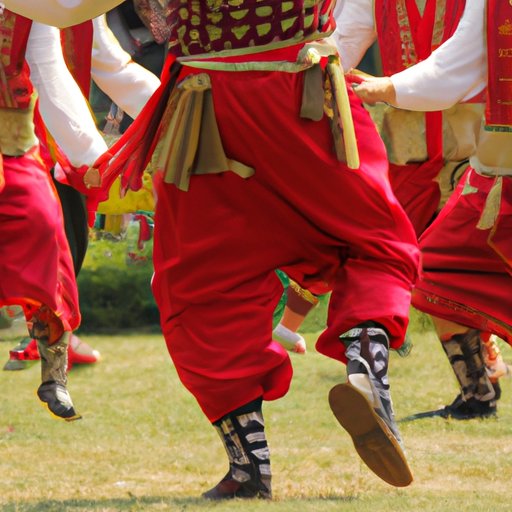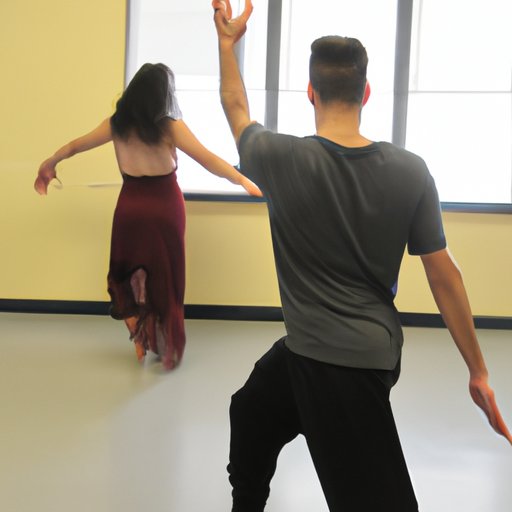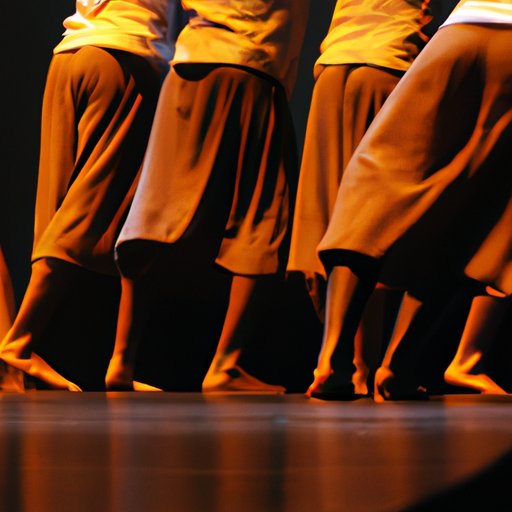Introduction
Dance is a universal language that has been used for centuries as an expression of emotion, an art form, and a way to celebrate life. As we explore its origins, it’s important to understand what exactly defines dance. According to the Oxford Dictionary, dance is “a sequence of rhythmic and patterned bodily movements typically performed to music.” Throughout this article, we will explore where dance originated, how it has evolved over time, and its cultural significance.
Exploring the History of Dance: Where Did it All Begin?
The exact origins of dance are unknown, but evidence suggests that dance has been around since prehistoric times. Ancient cultures such as the Egyptians, Greeks, and Romans all had their own unique dance traditions. These dances were closely linked to religious rituals, mythology, and spiritual beliefs. In many cultures, dance was seen as a way to honor the gods and goddesses. It was also used as a form of storytelling to pass down stories, legends, and traditions from generation to generation.

The Evolution of Dance Through the Ages
As time progressed, so did the evolution of dance. During the Prehistoric era, dance was used as a form of communication and ritualistic behavior. In the Medieval and Renaissance periods, dancing became increasingly popular among the upper and middle classes. Court dances such as the minuet and pavane featured intricate movements and patterns. During the Baroque and Classical periods, ballet emerged as a major form of entertainment. This period also saw the emergence of popular folk dances such as the waltz, polka, and mazurka.
In the 19th century, modern styles of dance started to emerge. New techniques such as pointe work, which was first developed in the early 1800s, revolutionized the art of ballet. Social dances such as the tango, foxtrot, and swing also gained popularity during this time. In the 20th century, jazz and tap dancing became popular in the United States, while hip hop and other street styles took off in the 1980s.
A Cultural Overview of Dance Through the Centuries
Throughout history, dance has been used to express joy and celebrate important cultural events. Different cultures have their own unique styles of dance, which have been passed down through the generations. Here is a brief overview of some of the different dance traditions around the world:
Middle Eastern and North African Cultures
Middle Eastern and North African cultures have a long-standing tradition of dance. The most famous type of dance from this region is belly dancing, which has been popular since ancient times. Other popular dances from the Middle East include dabke, khaleegy, and raqs sharqi. These dances are often accompanied by music from traditional instruments such as the oud and qanun.
South American and Caribbean Cultures
South American and Caribbean cultures have a rich history of dance. Salsa, merengue, and bachata are popular Latin dances that originated in Cuba and Puerto Rico. In Brazil, samba is the national dance, while in Colombia cumbia is the traditional dance. In Peru, the huayno is a popular dance that is still practiced today.
Indian and Southeast Asian Cultures
Indian and Southeast Asian cultures have their own distinctive style of dance. In India, classical dances such as Bharatanatyam, Kathak, and Odissi are still widely practiced. In Indonesia, the traditional dance is the Javanese Kebaya, while in Thailand the Ramwong is a popular folk dance. In China, the graceful and elegant Lion Dance is a traditional art form.
European and North American Cultures
European and North American cultures have their own unique dance traditions. In Europe, traditional dances such as the Irish jig, Scottish reel, and French bourrée are still widely practiced. In the United States, square dancing and line dancing are popular folk dances. Swing, salsa, and hip hop are also popular styles of dance in the US.

Ancient Dance Traditions Around the World
Many ancient cultures around the world have their own unique dance traditions. African dance is one of the oldest forms of dance, with tribal dances such as the Gumboot and the Zulu Stick Dance still being practiced today. Chinese dance has a long history, with the Dragon Dance and the Ribbon Dance being two of the most popular traditional dances. Greek and Roman dance was heavily influenced by religion, with many of the dances being performed to honor the gods and goddesses. Native American dance is also steeped in spirituality, with many of the dances being used to communicate with the spirit world.
Unraveling the Mystery of Dance’s Origins
While the exact origins of dance are unknown, there are several theories as to why people began to move in rhythm. One theory is that dance originated from biological impulses, such as the instinctive urge to move when hearing music. Another theory is that dance was used as a form of communication, with certain movements signifying certain messages. Finally, it is believed that dance was used as a form of artistic expression, as a way to tell stories or convey emotions.

Investigating the Roots of Popular Dance Styles
Today, there are many different types of dance. Ballet is one of the oldest forms of dance, with its origins dating back to the Italian Renaissance. Jazz is a modern style of dance that combines elements of African, Caribbean, and Latin American dance. Tap dancing is a popular style of dance that originated in the United States in the early 20th century. Hip hop is another popular style of dance that emerged in the late 1970s in the South Bronx neighborhood of New York City.
Examining the Influence of Dance on Society
Dance has had a profound influence on society throughout the ages. It has been used as a form of physical exercise to promote health and wellbeing. It has also been used as a tool for education, with many schools incorporating dance into their curriculums. Finally, dance has been used to promote social inclusion and understanding between different cultures.
Conclusion
Dance has been a part of human culture since ancient times. Its origins have been traced back to prehistoric times, with evidence suggesting that it was used as a form of communication and ritualistic behavior. Throughout the centuries, dance has been used to express joy and celebrate important cultural events. Different cultures have their own unique styles of dance, which have been passed down through the generations. Today, dance is still used as a form of communication, expression, and celebration. As we look back at its origins, it’s clear that dance has played a significant role in shaping our society.
(Note: Is this article not meeting your expectations? Do you have knowledge or insights to share? Unlock new opportunities and expand your reach by joining our authors team. Click Registration to join us and share your expertise with our readers.)
